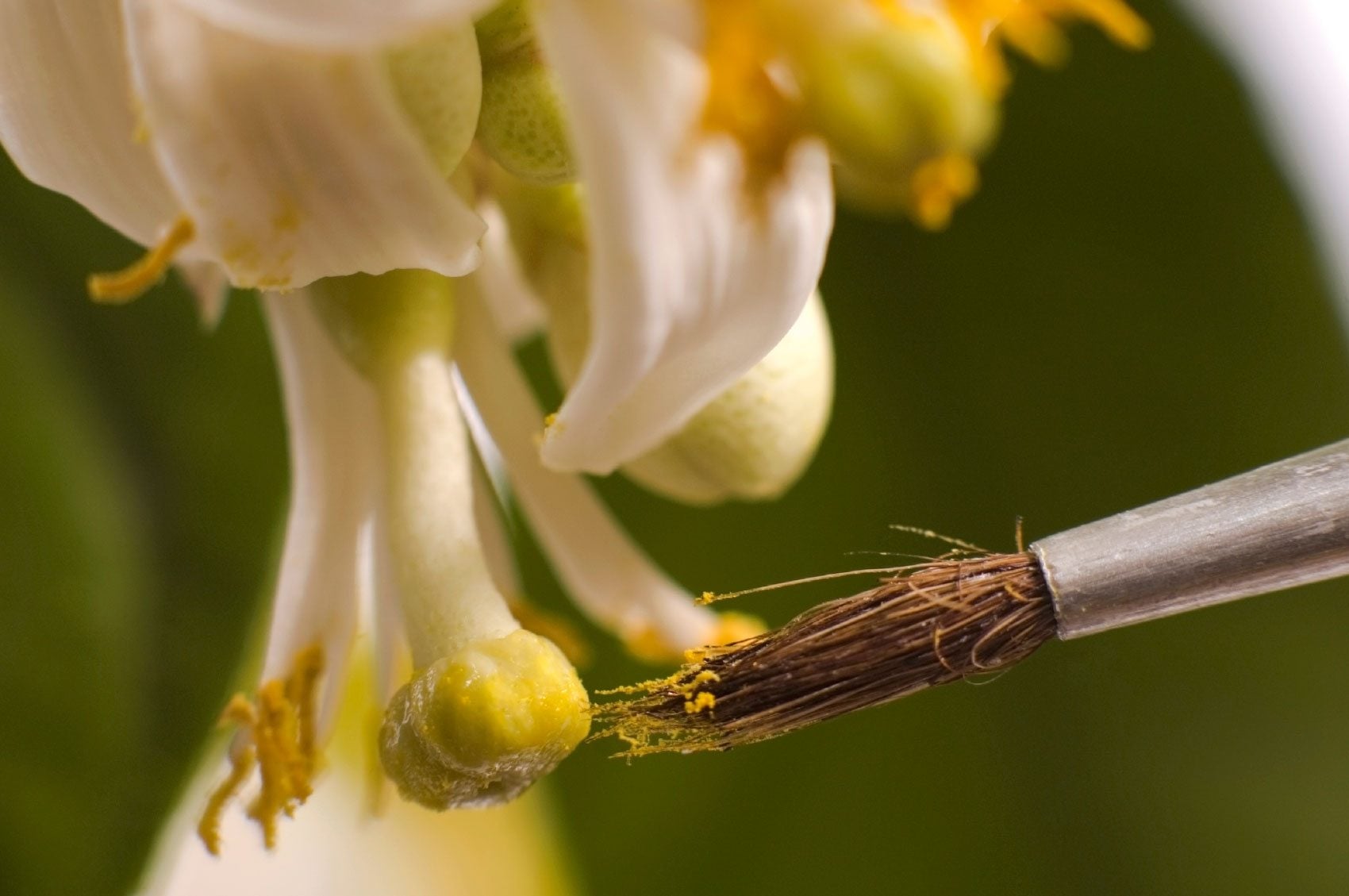Hand Pollinating Lime Trees: How To Hand Pollinate A Lime Tree

Is your lime tree less than stellar in the pollination department? If your yield is meager, perhaps you have wondered if you can hand pollinate limes? Most citrus trees are self-pollinating, but many folks in an effort to boost the bounty, resort to hand pollinating citrus. Hand pollination of lime trees is no exception.
Can You Hand Pollinate Limes?
Bees fascinate me. All summer I have been watching some big black bumblers crawl in and out of the air intake grate covering for under our house. Some days they have so much pollen hanging from them they can't crawl through the tiny hole and they flutter around looking for a larger gap. I like them so much that I don't even mind they are building a tiny Taj Mahal under the house. I respect how hard they work to keep me in fruits and veggies. I've even tried my hand at duplicating their busy work by hand pollinating citrus. It's tedious and makes me admire the bees all the more. I digress a bit, but yes, of course hand pollination of lime trees is very possible.
How to Hand Pollinate a Lime Tree
Generally, citrus grown indoors does not need hand pollinating, but as mentioned, some people choose to do so to increase the yield. To understand exactly how to hand pollinate, it's a good idea to understand how bees do this naturally in order to replicate the process. Pollen is located in the anthers (male) which appear as amber colored sacs. The pollen grains need to be transferred to the stigma (female) at just the right time. Think grade school “birds and bees” lecture from the parents. In other words, the anther must be ripe with mature pollen and the stigma receptive as the same time. The stigma is situated in the center surrounded by pollen laden anthers waiting for the transfer of pollen. If you want to increase your citrus yield, you can put your plants outdoors and let the bees do the work, or if the weather isn't cooperating, do it yourself. First, you will need a very delicate, tiny paint brush ideally, or a cotton swab, pencil eraser, feather, or your finger as a last resort. Gently touch the pollen laden anthers to the stigma, transferring the pollen grains. Hopefully, your result will be that the ovaries of the pollinated flowers swell, which is an indication of fruit production. It's as simple as that, but a bit boring and will really make you appreciate the industrious bees!
Sign up for the Gardening Know How newsletter today and receive a free copy of our e-book "How to Grow Delicious Tomatoes".

Amy Grant has been gardening for 30 years and writing for 15. A professional chef and caterer, Amy's area of expertise is culinary gardening.
